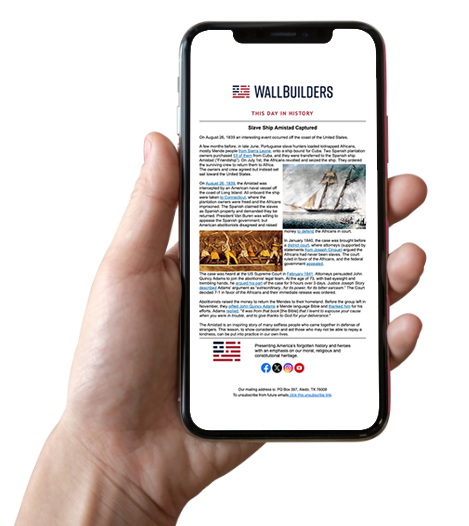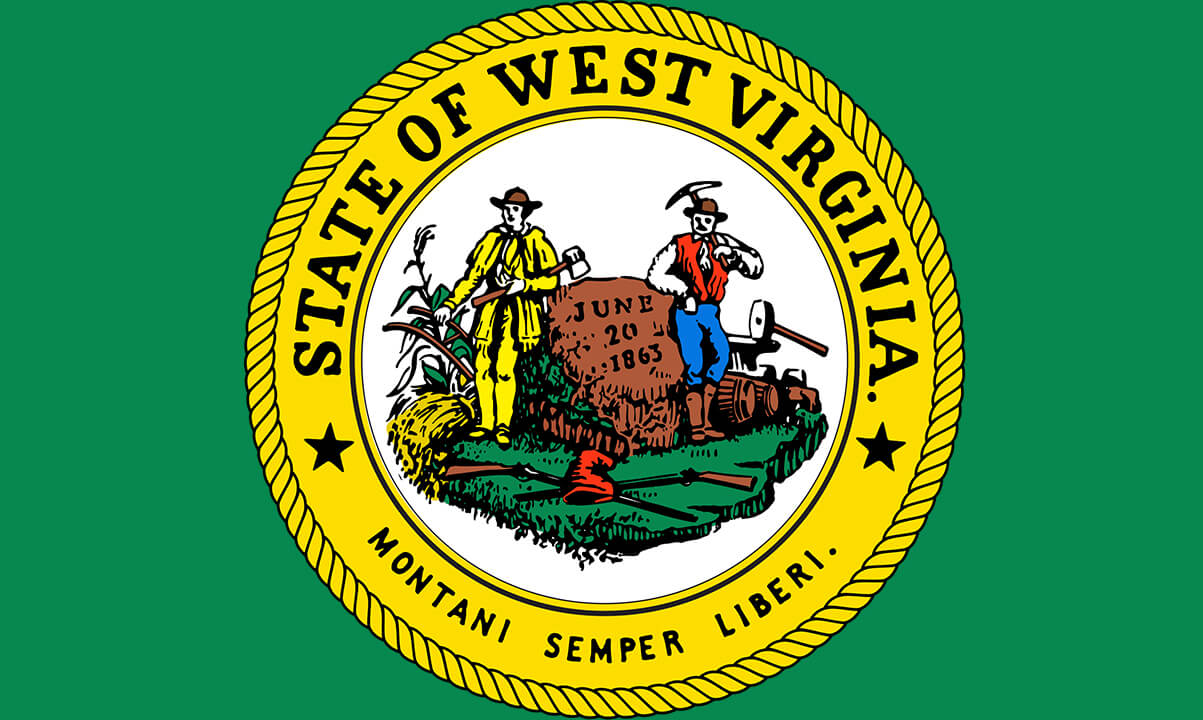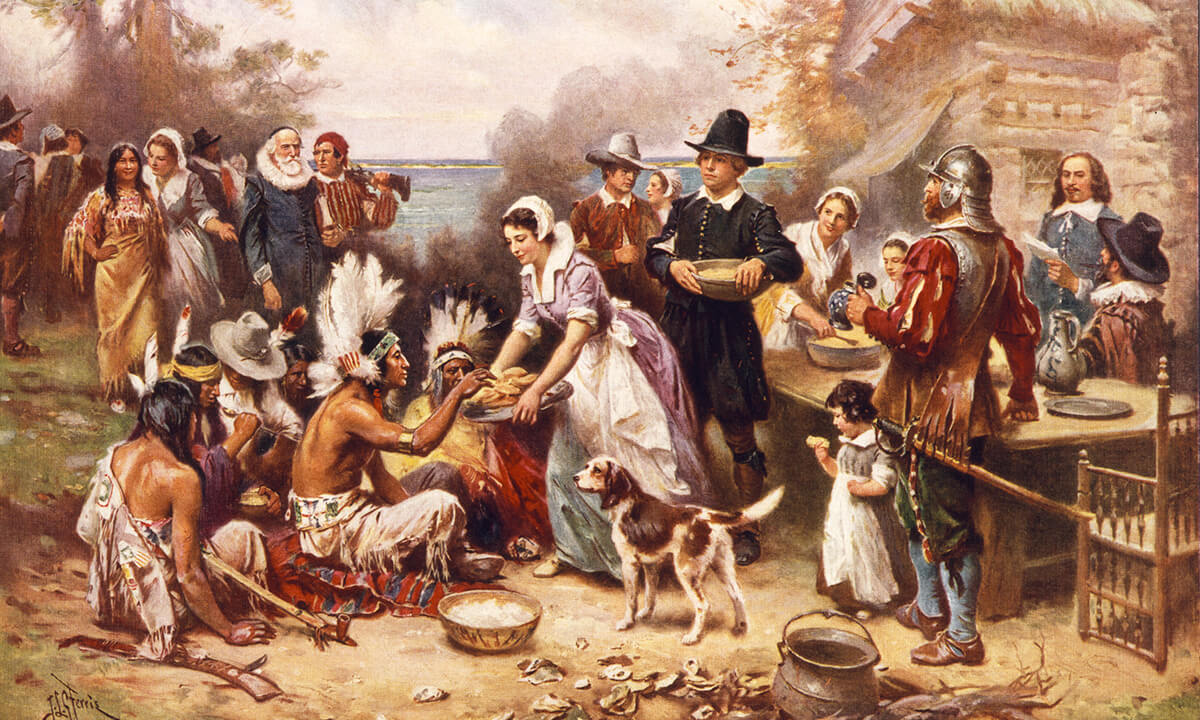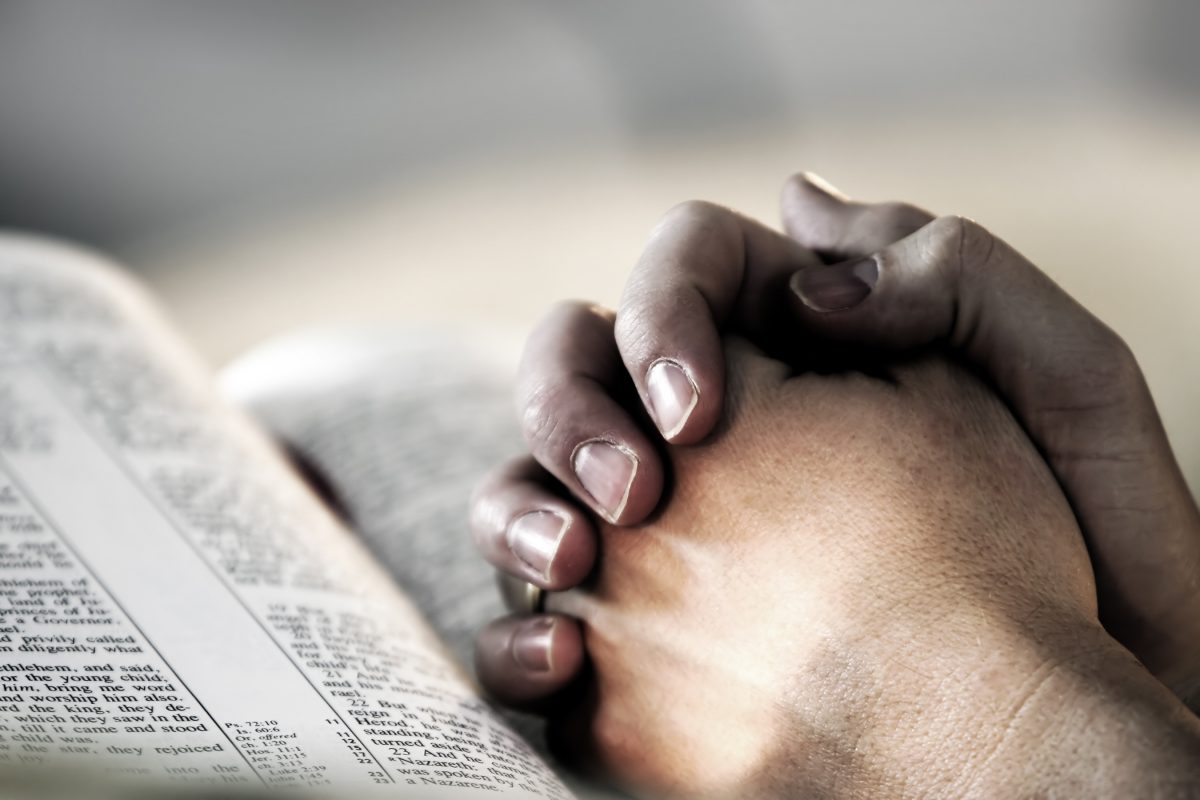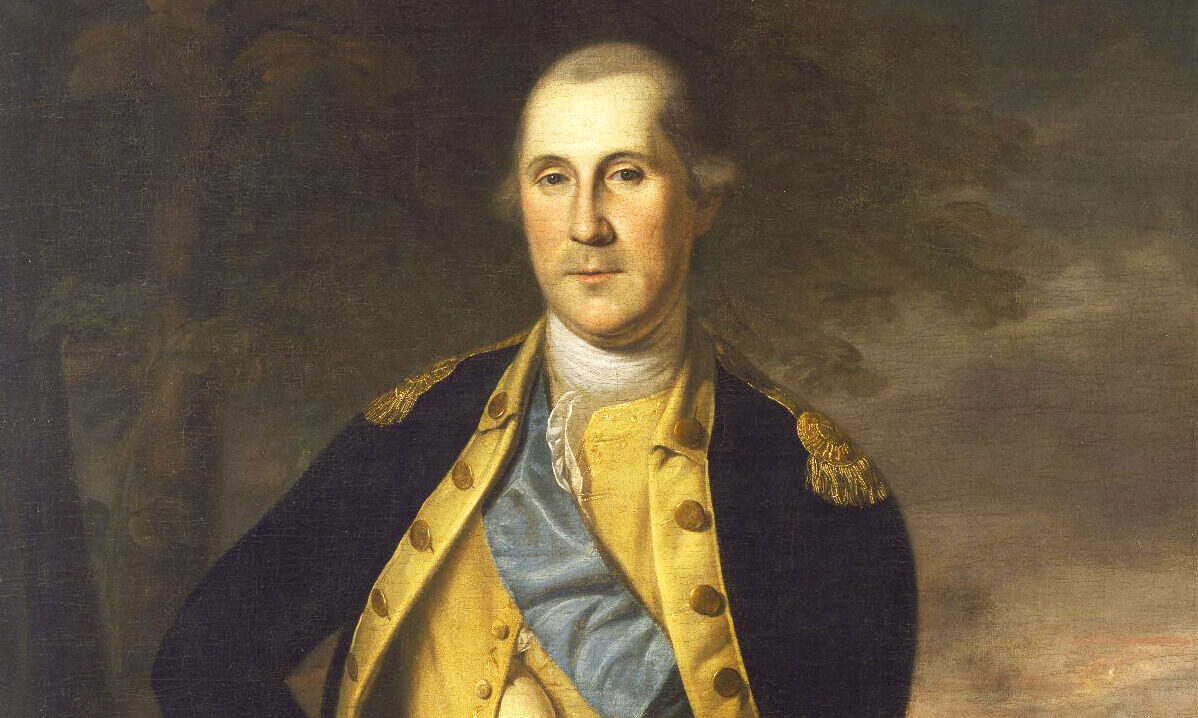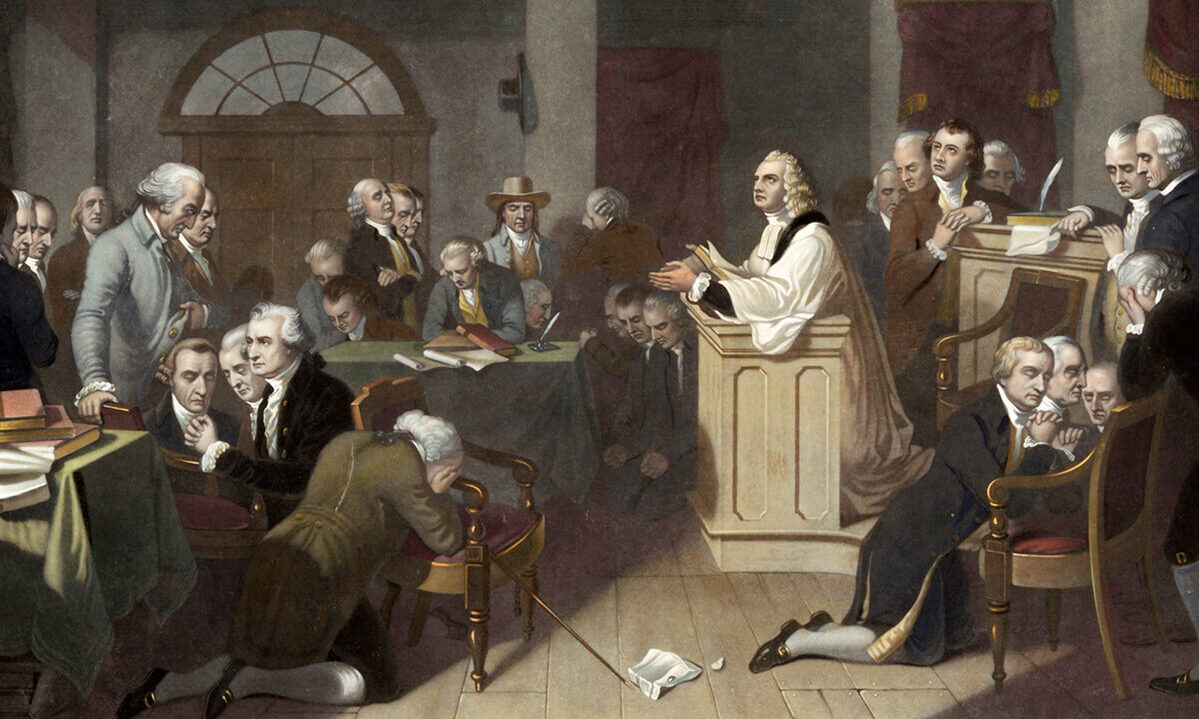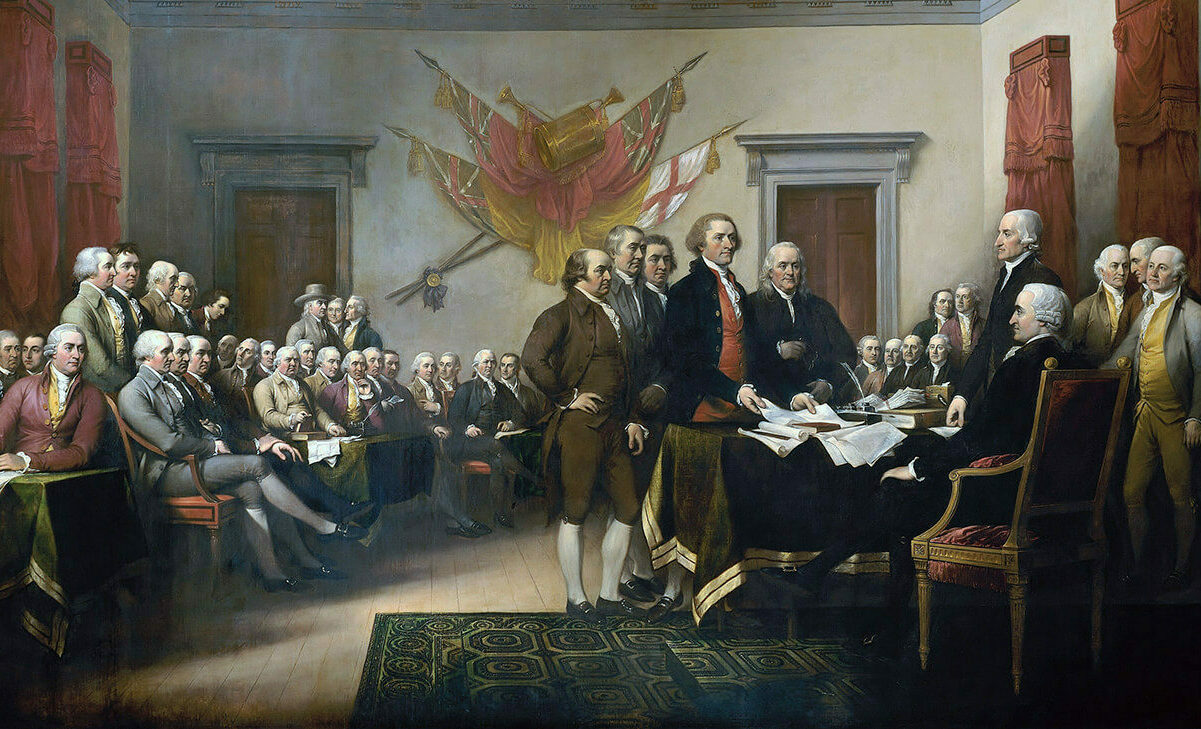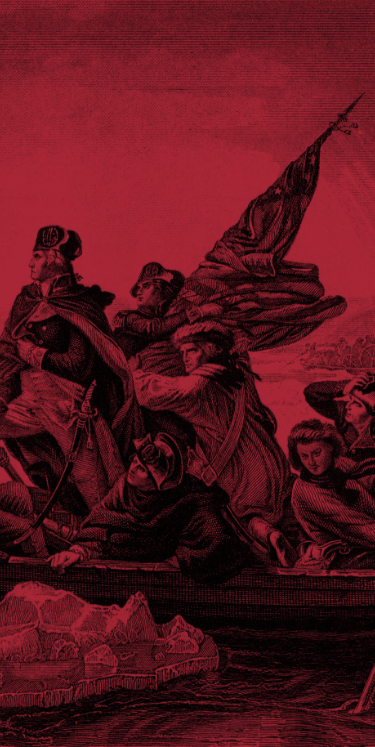A Midnight Ride to Lexington
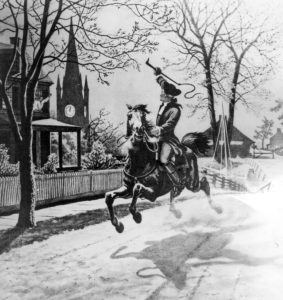 The events of April 18-19, 1775 are some of the most famous in the story of how Americans won the liberty that we still enjoy today.
The events of April 18-19, 1775 are some of the most famous in the story of how Americans won the liberty that we still enjoy today.
Those eventful days began on April 18, 1775 with a horseback ride by Paul Revere1 and William Dawes.2 They set out to warn militias across the Massachusetts countryside of approaching British troops,3 who were sent to Concord to confiscate the weapons there. These British troops were also dispatched to “bring back the bodies of Mess. Hancock and Adams.”4
Arriving in Lexington around midnight at the home of the Rev. Jonas Clark (where John Hancock and Samuel Adams were staying5), Revere passed on word of the British plans. Revere and Dawes then left Lexington, joined by Samuel Prescott,6 and continued their ride towards Concord. On their way, Revere and Dawes were captured by the British but Prescott escaped and alerted Concord.7
 After the alert by Revere had been delivered in Lexington, the local militia (largely the men from Clark’s church) was mustered. On the morning of April 19, 1775, some 70 Americans would face about 800 British troops.8 Gunfire was exchanged — the American Revolution had begun!
After the alert by Revere had been delivered in Lexington, the local militia (largely the men from Clark’s church) was mustered. On the morning of April 19, 1775, some 70 Americans would face about 800 British troops.8 Gunfire was exchanged — the American Revolution had begun!
As the smoke cleared, 18 Americans lay wounded or dead9 (all the casualties being from Pastor Clark’s church), including both black patriots (such as Prince Estabrook10) and white patriots (such as John Robbins11). (One of the amazing items we have in the WallBuilders library is a sermon preached by Jonas Clark on the one-year anniversary of the Battle of Lexington.)
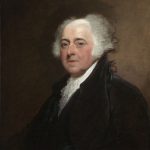 The much larger British force, having prevailed in that Lexington skirmish, continued their march towards Concord,12 where they would be met by the Rev. William Emerson and 400 American patriots awaiting them.13 Also involved in that Concord group was black patriot Peter Salem,14 who a few weeks later went on to become the hero of the Battle of Bunker Hill.15
The much larger British force, having prevailed in that Lexington skirmish, continued their march towards Concord,12 where they would be met by the Rev. William Emerson and 400 American patriots awaiting them.13 Also involved in that Concord group was black patriot Peter Salem,14 who a few weeks later went on to become the hero of the Battle of Bunker Hill.15
As we remember the events of this time from 1775 and the liberties they eventually produced, let’s also remember the responsibility those events place upon us. As John Adams reminded us:
Posterity! You will never know how much it cost the present generation to preserve your freedom! I hope you will make a good use of it. If you do not, I shall repent in Heaven that I ever took half the pains to preserve it.16
Endnotes
1 Paul Revere, Deposition, c. 1775, Massachusetts Historical Society, detailing his ride and capture.
2 “Paul Revere, Letter to Jeremy Belknap, c. 1798, Massachusetts Historical Society; see also “William Dawes: The Forgotten Midnight Rider,” February 17, 2014 History of Massachusetts Blog.
3 See “Lt. Col. Francis Smith to Governor Thomas Gage, April 22, 1775,” Gilder Lehrman for the British description of their mission, and Paul Revere’s handwritten deposition, c. 1775, Massachusetts Historical Society for the American description.
4 “Attempted Capture of John Hancock and Samuel Adams,” May 29, 2023, WallBuilders; see also Paul Revere’s letters to Jeremy Belknap, c. 1798, Massachusetts Historical Society.
5 J. T. Headley, The Chaplains and Clergy of the Revolution (NY: Charles Scribner, 1864), 78.
6 See Paul Revere’s handwritten deposition, c. 1775, Massachusetts Historical Society; see also Paul Revere’s letters to Jeremy Belknap, c. 1798, Massachusetts Historical Society.
7 George Bancroft, History of the United States, from the Discovery of the American Continent (Boston: Little, Brown, and Company, 1864), VII:290; see Paul Revere’s handwritten deposition, c. 1775, Massachusetts Historical Society.
8 There is a wealth of sources relating to the numbers in the Lexington battle that often provide differing numbers, such as: “Lt. Col. Francis Smith to Governor Thomas Gage, April 22, 1775,” Gilder Lehrman (British officer who states they sent “six light infantry companies” to Lexington, or 200–300 troops); Deposition #20, Edward Thoroton Gould, American History Central (British soldier who states there were 60–70 American militia); Deposition #8, Nathanael Parkhurst et al., American Battlefield Trust (who provides more details about the militia assembly at Lexington). Benson J. Lossing, A History of the United States (NY: Mason Brothers, 1860), 232, says there were 800 British troops which aligned with information stated by Jonas Clark in his sermon.
9 A soldier present at Lexington stated: “they [the British] killed eight of our company & wounded several” (Deposition #8, Nathanael Parkhurst et al., American Battlefield Trust).
10 “Historical Documents: “A List of the Names of Provincials…” 1775,” PBS, accessed April 10, 2025.
11 “Deposition of John Robbins,” April 24, 1775, DocsTeach.
12 Bancroft, History (1864), VII:297; see “Lt. Col. Francis Smith to Governor Thomas Gage, April 22, 1775,” Gilder Lehrman for the British description of their march to and from Concord.
13 Deposition #17, James Barrett, April 23, 1775, American History Central (specifies 300–400 militia present at North Bridge in Concord); Bancroft, History (1864), VII:290, 299. “Lt. Col. Francis Smith to Governor Thomas Gage, April 22, 1775,” Gilder Lehrman provides a British perspective as he states: “On our leaving Concord to return to Boston they began to fire on us from behind the walls, ditches, trees etc., which as we marched increased to a very great degree and continued without the intermission of five minutes altogether for I believe upwards of eighteen miles, so that I can’t think but it must have been a preconcerted scheme in them to attack the King’s troops the first favourable opportunity that offered.”
14 “Historical Documents: “A List of the Names of Provincials…” 1775,” PBS, accessed April 10, 2025.
15 William C. Nell, The Colored Patriots of the American Revolution (Boston: Robert F. Wallcut, 1855), 21.
16 John Adams to Abigail Adams, April 26, 1777, Letters of John Adams Addressed to His Wife, ed. Charles Francis Adams (Boston: Charles C. Little and James Brown, 1841), 218.
Still looking for answers? Visit our FAQ page
More Resources
Know the Truth and Protect Your Freedoms.
Still looking for answers? Visit our FAQ page
Stay Informed with the Latest Resources
Enter your email address to receive our regular newsletter, with important information and updates right in your inbox!
